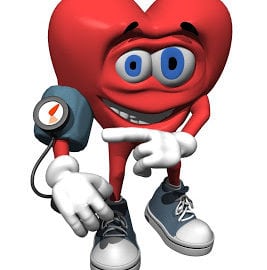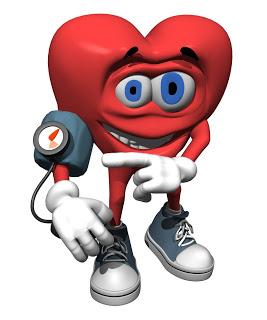These days everyone is running around getting their blood pressure checked at the local pharmacy. Many times that raises more questions than answers. What are you supposed to do with those numbers? High blood pressure (hypertension) is so prevalent and such a consequence of the way we live that you must already have an understanding of some basic principles if you care at all about your health. Feel free to offer your own questions or comments.
1. How do I know if I have high blood pressure?
You know by the numbers. Consider these defining blood pressure levels.
Normal – Systolic: < 120 mmHg, Diastolic: < 80 mmHg
At risk (pre-hypertension) – Systolic: 120–139 mmHg, Diastolic: 80–89 mmHg
High Systolic – Systolic: 140 mmHg or higher, Diastolic: 90 mmHg or higher
If you don’t already have a diagnosis of hypertension and are anywhere at or above the pre-hypertension stage, get checked by your physician.
2. But when should I get go to the emergency room for high blood pressure?
I’ll always want to see you if your bottom number (diastolic blood pressure) is at or above 110-115, regardless of whether you appropriately take your medication. Don’t look for symptoms to guide you. High blood pressure is called “the silent killer.”
3. If I do have high blood pressure, will I be placed on medication?
I really hope not, but honestly, approximately two-thirds of individuals in the U.S. who have high blood pressure are poorly controlled – even on medication. This means medication will be necessary for most. That said, theoretically, medication should be viewed as necessary only when necessary and only when other measures don’t work. You should discuss this with your individual physician and make every effort to improve your diet and exercise regimens. If and when you’re placed on medication, the choice of medication will be based on your age, sex, ethnicity, mobility, existing health profile and other considerations.
4. You mentioned I could have a heart attack or stroke from this? How would I know if that’s happening?
Straight, No Chaser will have upcoming posts on heart attack and stroke recognition. where we will discuss signs and symptoms. Remember, time is tissue, meaning you must not delay if you develop these symptoms.
5. What else can I do?
Be healthy! Don’t smoke. Limit alcohol intake. Lower your stress level. This is only a broken record if you’ve received the message and have implemented the recommendations.
Order your copy of Dr. Sterling’s new book Behind The Curtain: A Peek at Life from within the ER at jeffreysterlingbooks.com, iTunes, Amazon, Barnes and Nobles and wherever books are sold.
Thanks for liking and following Straight, No Chaser! This public service provides a sample of what http://www.SterlingMedicalAdvice.com (SMA) and 844-SMA-TALK offers. Please share our page with your friends on WordPress, like us on Facebook @ SterlingMedicalAdvice.com and follow us on Twitter at @asksterlingmd.



Nice blog! It is essential that you have your blood pressure taken in both arms. This can assist in determining if there is a blockage in the arm (subclavian steal). It is also important to know which arm has the highest pressure.